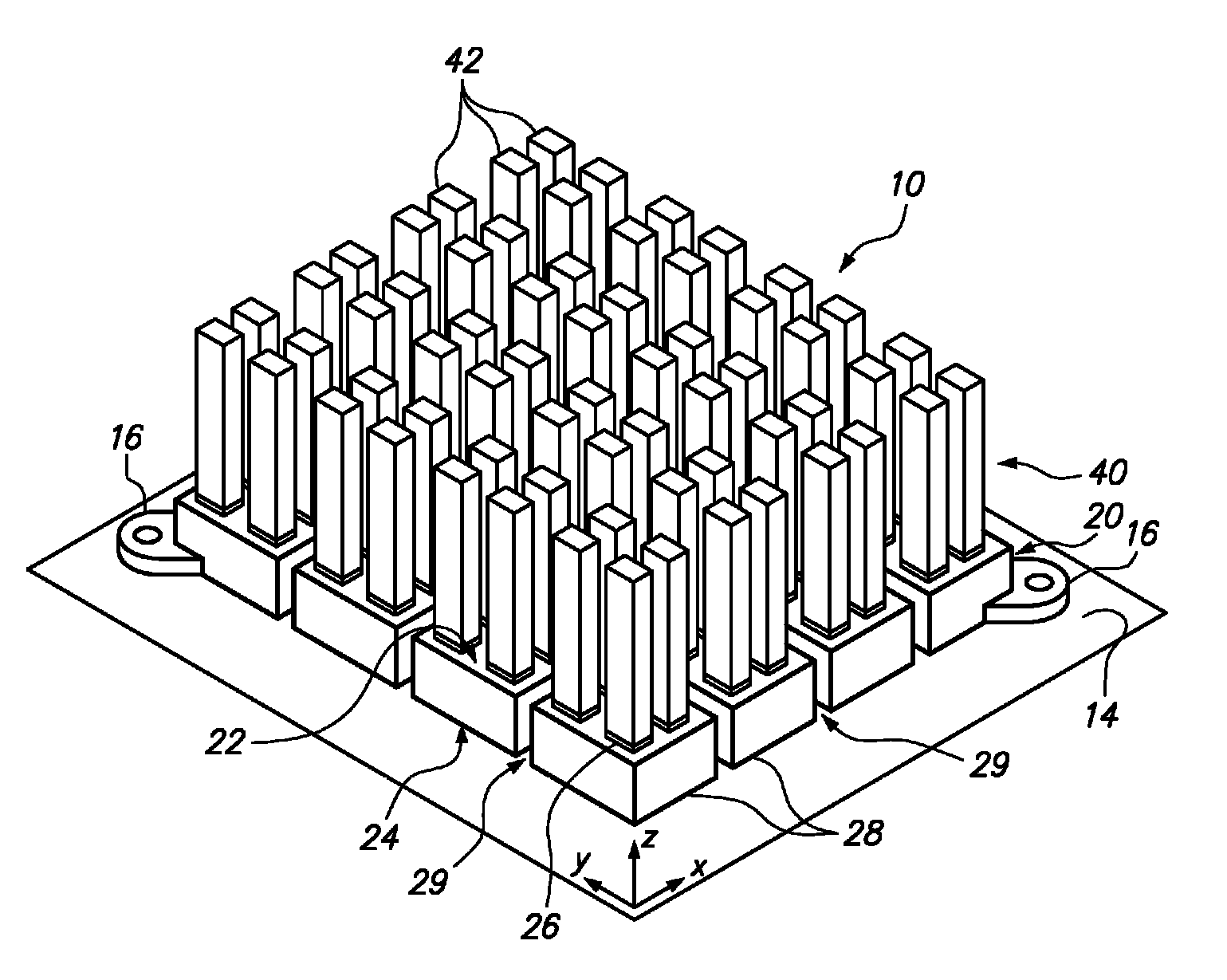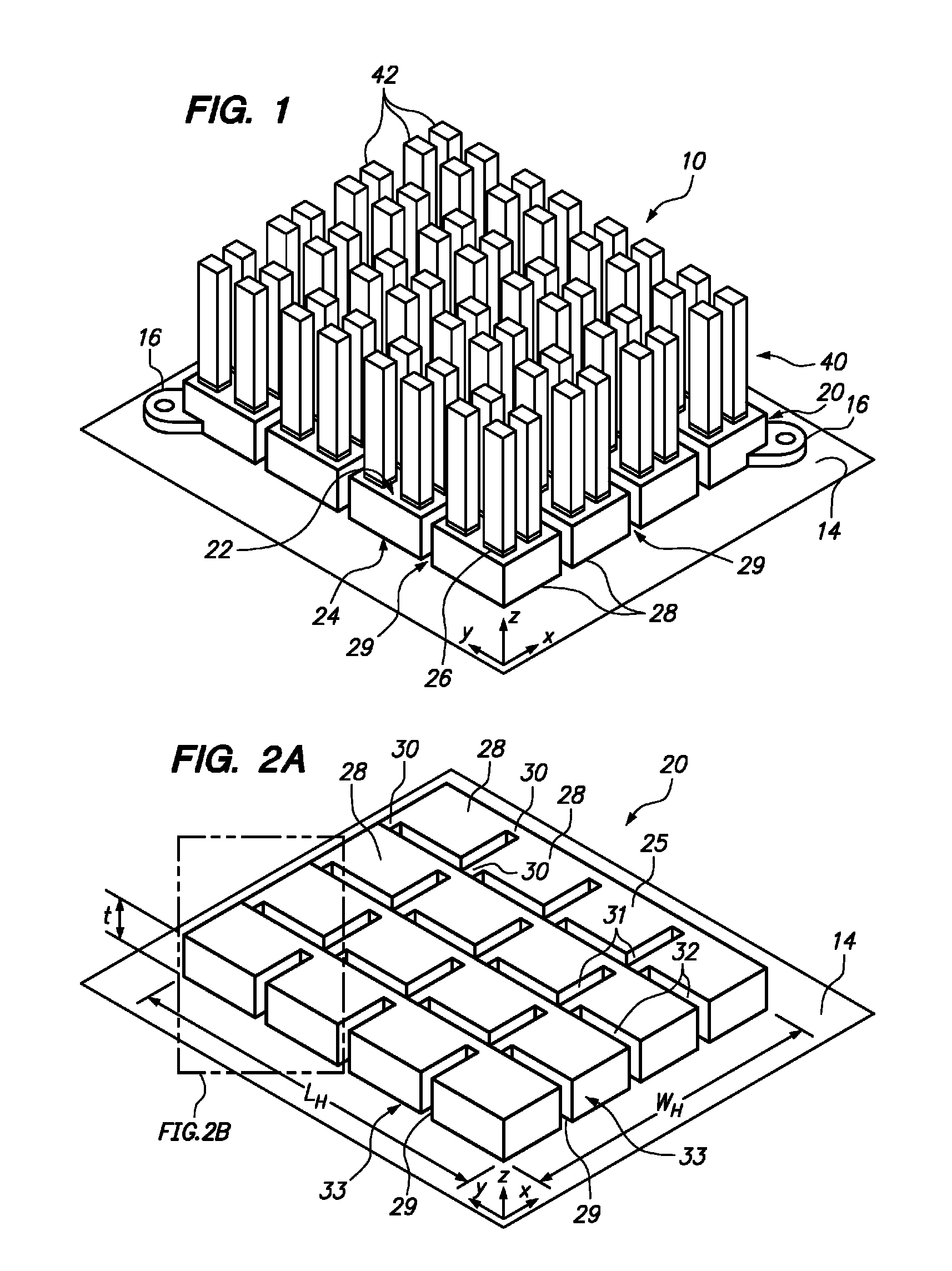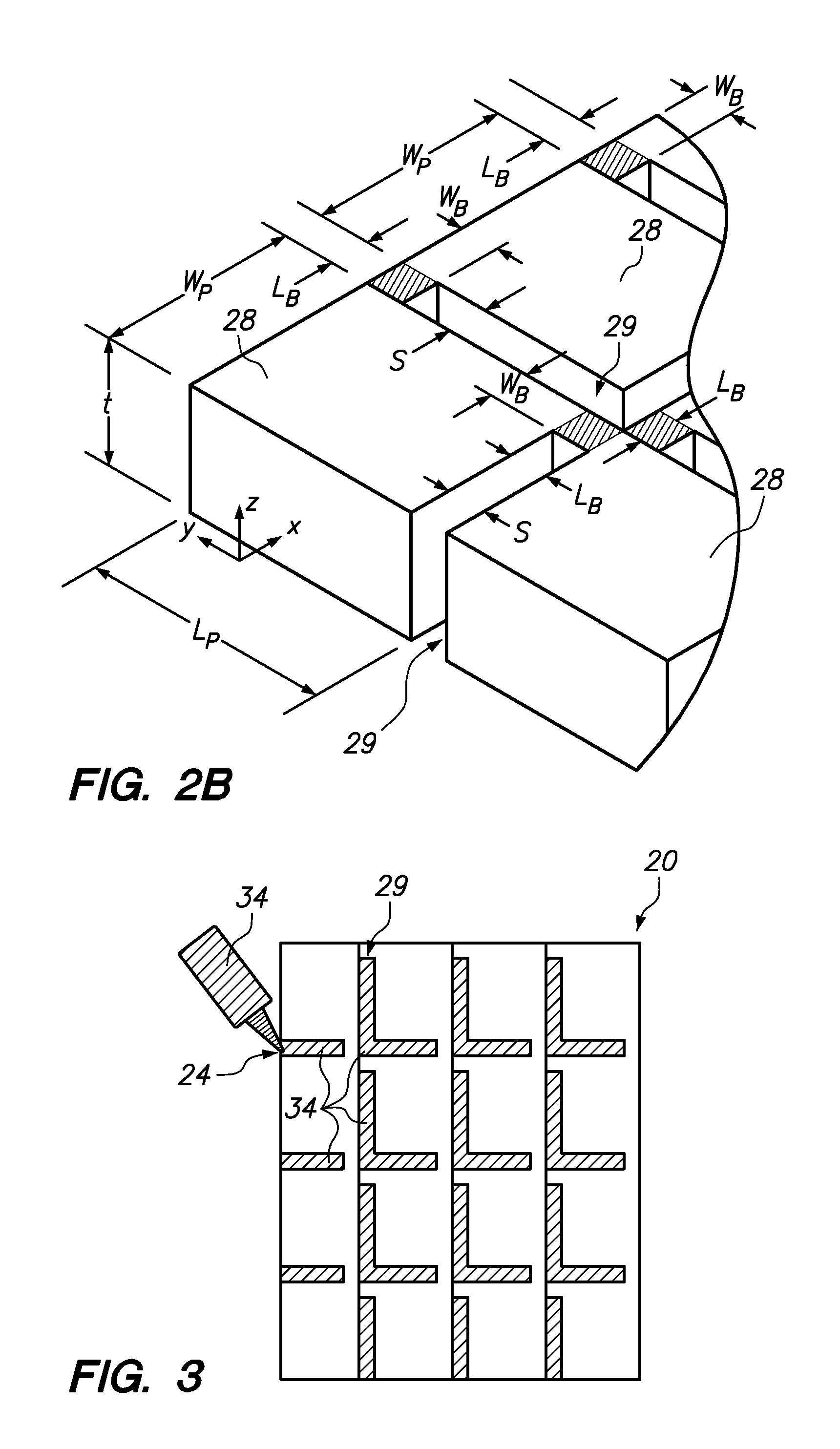Heatsink with periodically patterned baseplate structure
a heatsink and periodic pattern technology, applied in the field of heatsinks, can solve the problems of heatsinks being particularly problematic, degrading or limiting the effective performance of circuits, and adding cost to printed circuit board assemblies, so as to reduce electromagnetic noise propagation
- Summary
- Abstract
- Description
- Claims
- Application Information
AI Technical Summary
Benefits of technology
Problems solved by technology
Method used
Image
Examples
Embodiment Construction
[0020]Embodiments of the invention are directed to reducing electromagnetic interference (EMI) caused by an integrated circuit (IC) in an electronic device. One embodiment is a heatsink for an IC incorporating a periodically patterned structure within the base of the heatsink. The periodically patterned structure, together with a solid metal layer of a circuit board (e.g. ground layer or power layer), form an electromagnetic bandgap (EBG) structure that reduces the efficiency of the heatsink acting as an antenna in certain frequency bands. The periodically patterned structure includes a periodic array of electrically-conductive patches interconnected by electrically-conductive branches. Openings in the periodically-patterned structure are filled with a thermally-conductive but electrically non-conductive filler, which maximizes heat transfer within the heatsink without undermining the electrical properties of the EBG structure. Heatsink fins are coupled to the heatsink base using a ...
PUM
 Login to View More
Login to View More Abstract
Description
Claims
Application Information
 Login to View More
Login to View More - R&D
- Intellectual Property
- Life Sciences
- Materials
- Tech Scout
- Unparalleled Data Quality
- Higher Quality Content
- 60% Fewer Hallucinations
Browse by: Latest US Patents, China's latest patents, Technical Efficacy Thesaurus, Application Domain, Technology Topic, Popular Technical Reports.
© 2025 PatSnap. All rights reserved.Legal|Privacy policy|Modern Slavery Act Transparency Statement|Sitemap|About US| Contact US: help@patsnap.com



